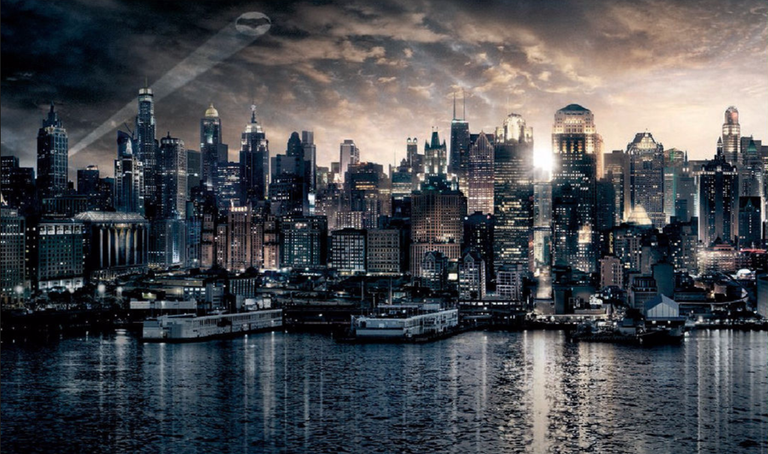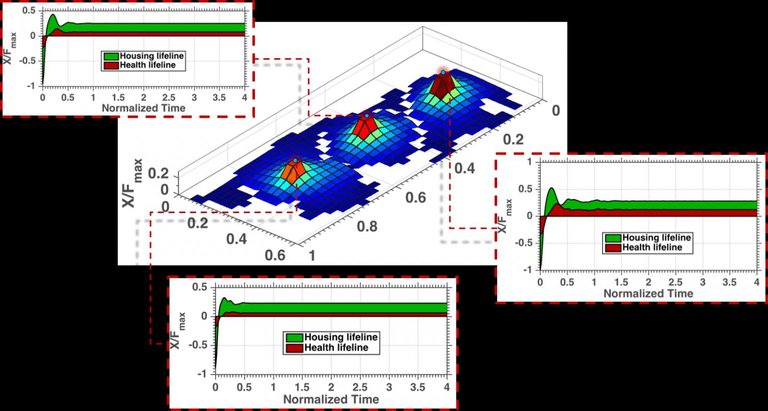Gotham city is a city characterised by it's resilience. Because of this, the city is able to resist or even recover after an unexpected disaster happens. The disaster could be any prevalent in the different parts of the world today like flooding, fire outbreak or even earthquake.

Imagine creating a city that could withstand such disasters. It is somewhere everyone will one to stay. Each community have it's problems, in my neighbourhood flooding is the most prevalent one. There are some other communities that experience fire outbreak as the most common too. This makes it difficult for engineers and others in related fields to estimate an undeviating resiliency.
In a recent study by a Civil Engineer called Hussam Mahmoud he introduced a new study that could enhance the process of estimating resiliency for communities. This new approach can help various neighbourhood in improving their preparations for dangers. Mahmoud and his team in Colorado State University created a dynamic math model. This model takes into cognisance the community's architecture, economic and social attributes. The model is based time, the ability of the community to resist hazards and it's area. It does not matter if the disaster is natural or artificial.
More works on this can be found in a book titled Computer-Aided Civil and Infrastructure Engineering. The book was written by Mahmoud and Akshat Chulahwat. (a graduate student)
In Civil Engineering, some tools are used to ascertain the stress and strain in structural elements. The book Mahmoud and Akshat wrote, used finite element analysis which can be used for analysing beams and columns. It is based on the Newton's third principle, that a body will continue to remain at rest or uniform motion unless it is acted upon by a force. That is how a community reacts when hazards happen.
"Our mathematical formula allows you to cause disruption to a community at any location, and see what that disruption would do to the entire community," said Mahmoud, associate professor of civil engineering.

A fictional city was used for testing this analysis, that is Gotham city. This was done to show a proof-of-concept for the project.
Community resiliency is a topic that interest many civil engineers. For a civil engineer, this is important in order to build lasting structures. Social scientists are interested in this too, in order to foster relationship between individuals in the community. Mahmoud as an engineer is desirous to do do more in this regards. The work of engineers is to solve problems, resiliency is viewed as both an engineering problem and socio-economic problem. Individuals living in a community decide the problem that matters most to them.
According to Mahmoud and Chulahwat,
Recovery of all lifelines that is integrated to form a unified resilience metric. The metric combines engineering, social and economic features of the lifelines together, as opposed to selecting only one of them.
The approach applies these same lifelines, but simplifies resilience into three classes: social, economic and infrastructure. Using an equation from classical mechanics, it is considered mass to represent social vulnerabilities; damping to represent funds available for recovery; and stiffness to represent robustness of infrastructure.
The variables mentioned are related to one another. A change in one affects the other, it can be compared to removing a step from a complete process.

Mahmoud and Chulahwat's model used Gotham city's map for verification. The map was divided into three areas - the upper region, mid region and lower region. The results of disasters in each of these three regions were then calculated. A jail riot in the upper part of the city, Arkham Asylum was also taken notice of.
Studying the conditions it was observed that the recovery from a disaster does not need to be fast. A fast recovery could lead to unstableness, so a slow but steady recovery could be chosen instead.
A disaster could lead to instability in a community for many years, and the impact of some are difficult to calculate. The Arab Spring that happened in Egypt about years used in the study too. This new model by Mahmoud shows how long lasting the effect of Arab Spring could be.
In his conclusion, Mahmoud said;
Our model can help us determine what happens to your community, both spatially and temporally, if it's struck by a natural disaster, economic downturn or social disruption
This makes Gotham city a fine example when taking about resilience. Though fictional, with advancing technology one or two things can be implemented from studying it's structure.
References:
Eureka Alert
colostate.edu

Batman is just an idea, but a strong personality @jaff8
I didn't write about Batman but rather on his city - Gotham city. You can read to have a better understanding of the topic.
Really interesting piece @jaff8. This technology is fictional but it is a way forward as far as controlling disaster in structures is concerned! Cities could be saved from disasters with this technology. Hopefully it will come into play soon.
Yeah, a fictional model was used. With time such analysis could be brought into reality with more research on resiliency. Thanks for coming around.
Amazing post from my brother
This is a clever use of science